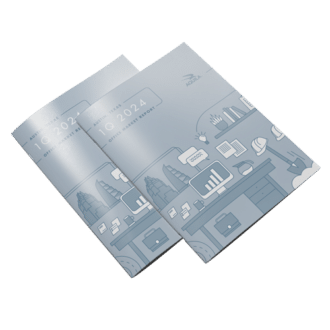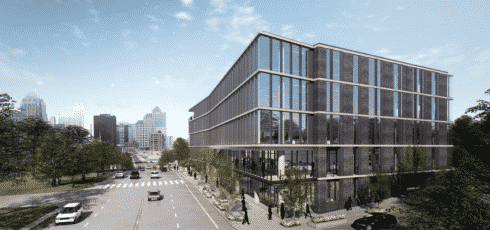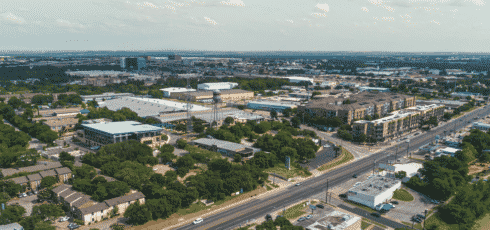This article was originally published in AQUILA’s 3Q 2021 Austin Office Market Report. This article will not be updated, but please contact us if you have specific questions regarding the information in this article.
As the Austin market continues to grow and competition for commercial space increases with it, developers are beginning to search for the next best path for growth in Austin. For many developers, this search has led them to Southeast Austin.
Read Next: 3 Major Trends Contributing to the Austin Office Market Shift
In this quarter’s special report, we’ve taken a deep dive into the Southeast Austin market to better understand what’s going on in the area. As a part of our analysis, we cover:
- What areas Southeast Austin includes
- The history of Southeast Austin
- Demographics in the area
- Current and upcoming development plans
What Areas Southeast Austin Includes
Before we dig in too far, we need to define what we mean by Southeast Austin.
The Southeast Austin submarket is bounded by the Colorado River to the north, IH-35 to the west, SH-45 to the south, and SH-130 to the east. The Near Southeast micromarket includes the area north of SH-71 and west of US-183.
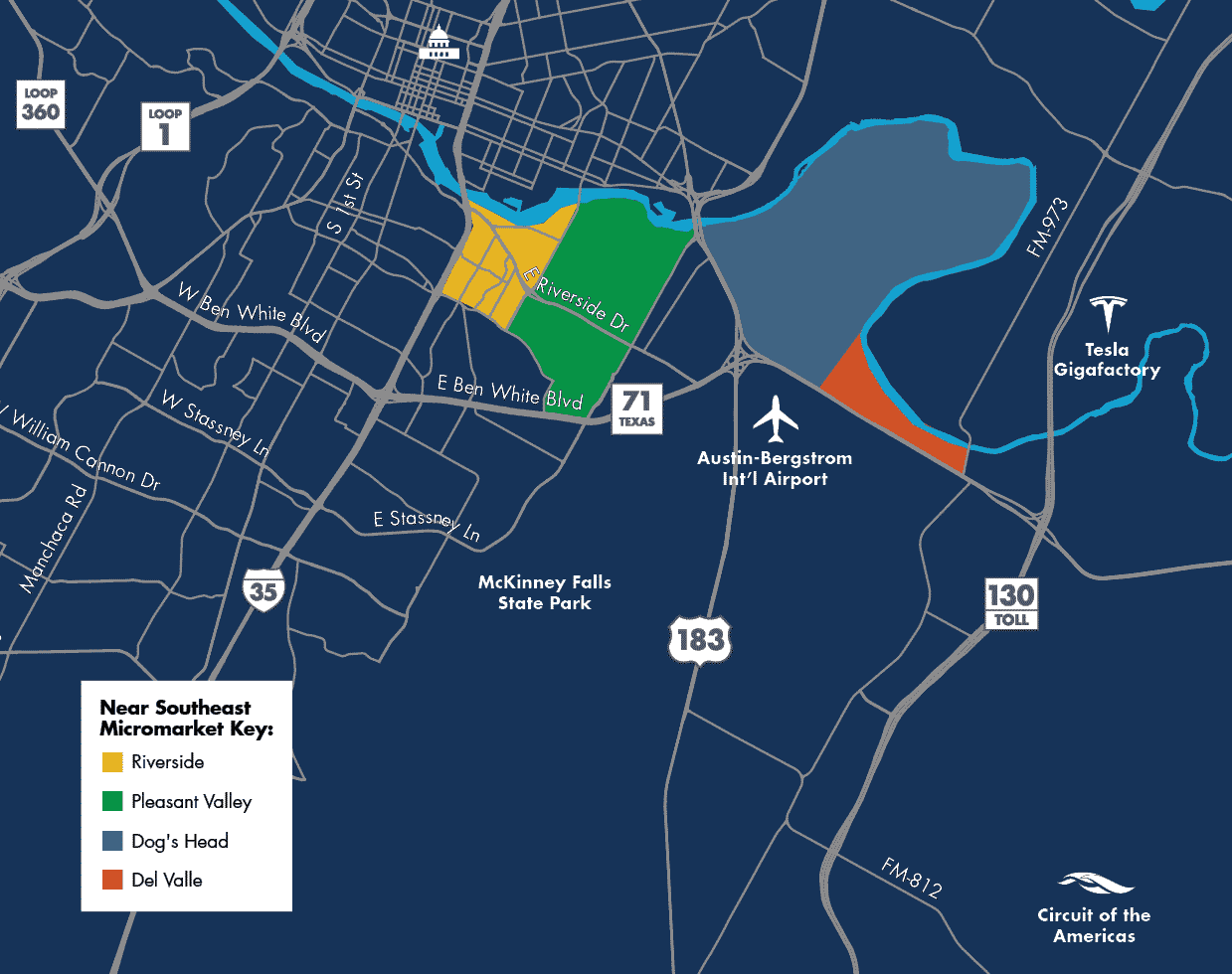
Encompassing roughly 85 square miles, the Southeast submarket includes well-known neighborhoods like Riverside, Del Valle, and Pleasant Valley, as well as important Austin landmarks like the Austin-Bergstrom International Airport and McKinney Falls State Park. The area also borders Circuit of the Americas to the east and the new Tesla Gigafactory to the northeast.
Demographics in Southeast Austin
Southeast Austin has a deep-rooted history and has played a role in the Austin story since the very beginning. The Montopolis area, for example, was founded nine years before Austin itself and heavily competed with Austin’s successor, Waterloo.
Median Household Income (2021)
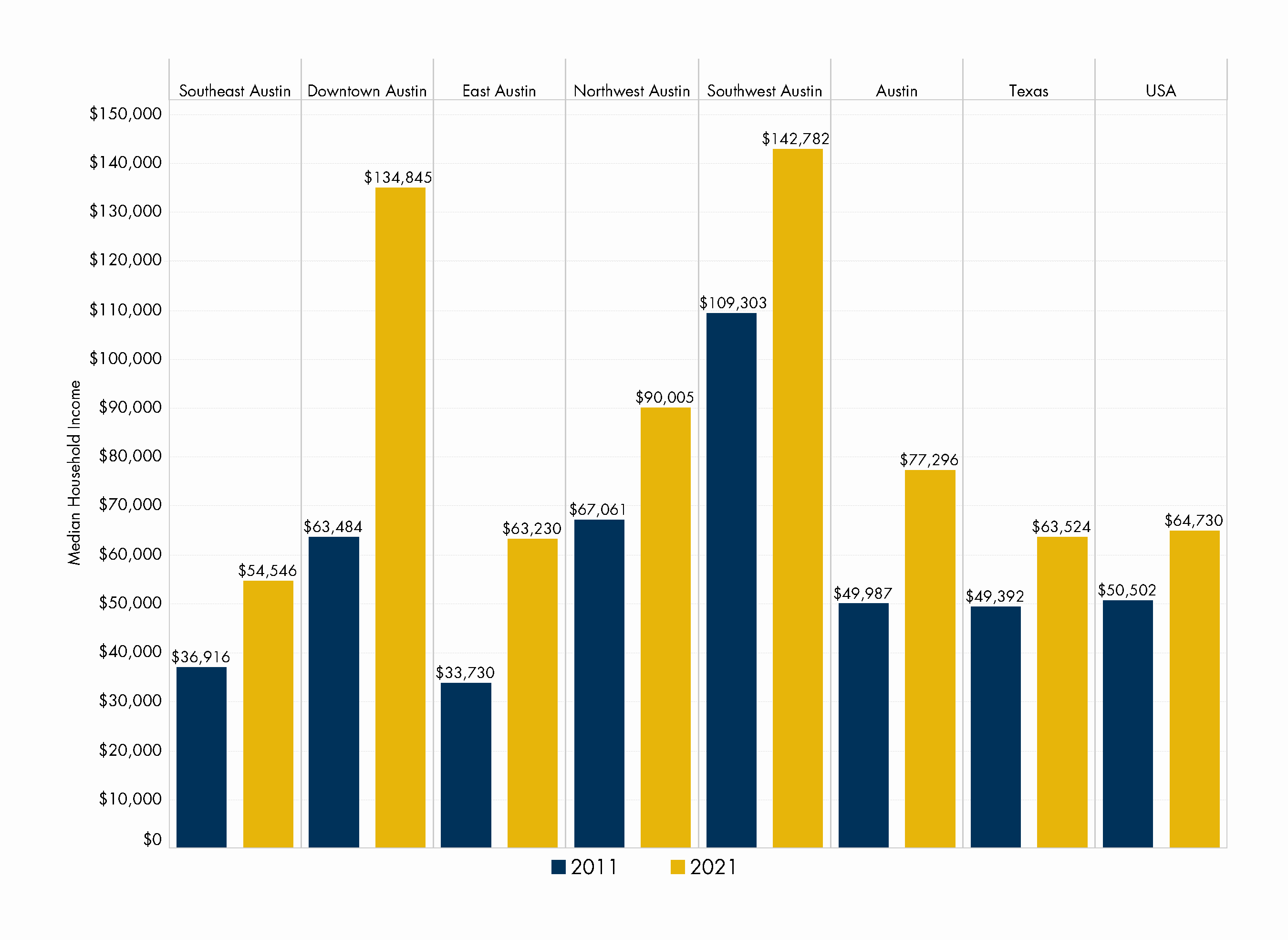
Source: Esri
Today, Southeast Austin is similar to East Austin in terms of median household income and has a portion of the population with a Bachelor’s degree or greater comparable to Texas and the United States as a whole.1
% of Population 25 or Older with Bachelor’s Degree or Greater (2021)
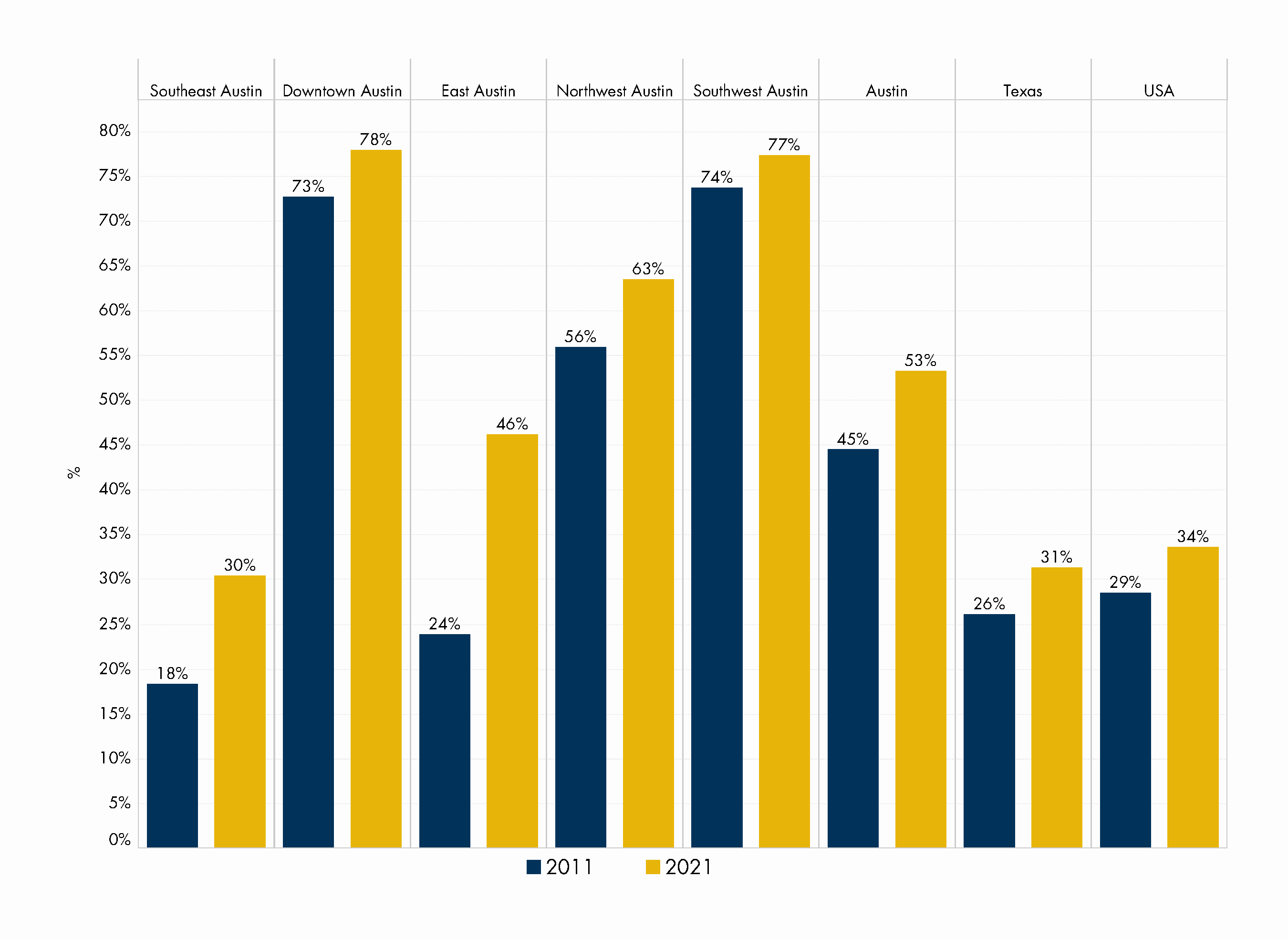
Source: Esri
Southeast Austin has also grown by 31% since 2010, adding 34,282 new residents. Many of the area’s residents are younger compared to the general Austin population, with a median age of 29 compared to 33 for Austin overall. The area’s population is 33% millennial and 29% generation Z, meaning roughly 60% of the population is 40 years old or younger.
Population Breakdown by Generation (2021)
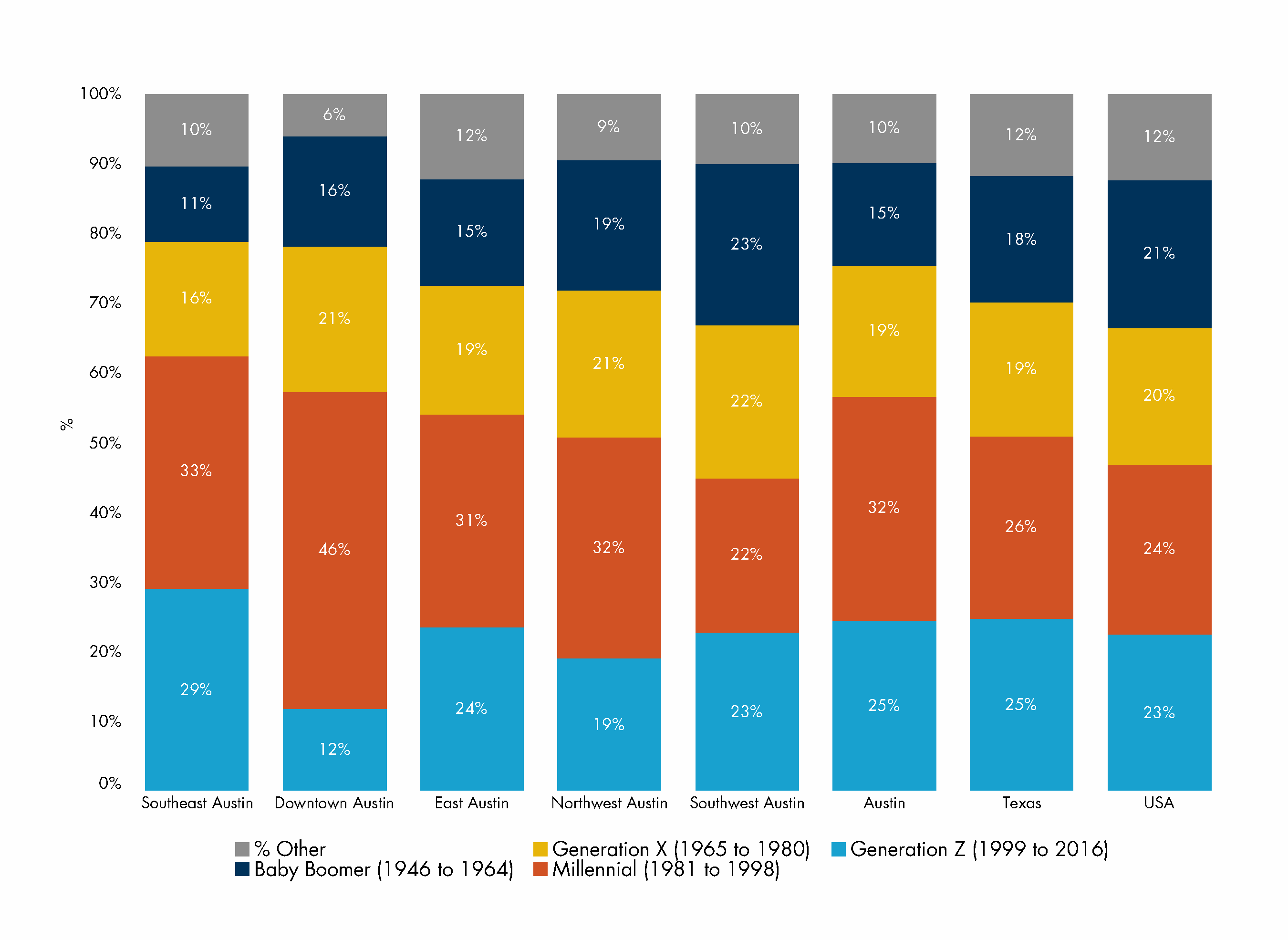
Source: Esri
Real Estate History in Southeast Austin
Southeast Austin has historically been an industrial area, with a substantial portion of Austin’s industrial space located within its boundaries. The area has also historically had more affordable housing relative to other areas of Austin, leading the area along Riverside near IH-35 to become a booming area for student housing development in the late 90s and early 2000s.
As for office space, not much has changed in the last 20 years. Whereas roughly 7.3 million square feet of industrial and flex space and 15,855 multifamily units have been delivered since 2000, only 1.9 million square feet of office space has been built. A majority of that office space can be attributed to Oracle’s campus (970,000 square feet), and 500,000 square feet of the total is attributed to buildings under 100,000 square feet.
Market Size 2000 to Today
| Office (Square Feet) | Industrial/flex (Square Feet) | Multifamily (Units) | |
| Today | 6.2 million | 16.3 million | 30,190 |
| 2010 | 4.7 million | 12.8 million | 20,204 |
| 2000 | 4.3 million | 9 million | 14,335 |
That said, Southeast Austin has started to gain traction in recent history due to a number of infrastructure improvements and adjacency to major entertainment and industrial developments. Improvements to SH-130 and renovations and additions to ABIA have improved transportation in the area. Adjacency to the Circuit of the Americas and the new Tesla Gigafactory have drawn eyes and visitors to the area that otherwise may not have taken notice.
Considering 36 million square feet of office space has delivered in Austin since 2000, but less than 2 million square feet has landed in Southeast Austin, it’s clear the area has not been riding the office wave along with other submarkets.2 However, with the volume of commercial projects under construction and proposed today, the area could soon be seeing a drastic increase in activity.
Southeast Austin Developments
Southeast Austin has several multifamily and industrial projects currently under construction and expected to deliver in the coming years. Although no major office developments have broken ground yet (with the exception of the creative office space at MetCenter) developers have proposed big plans for the area.
Under Construction Developments in Southeast Austin
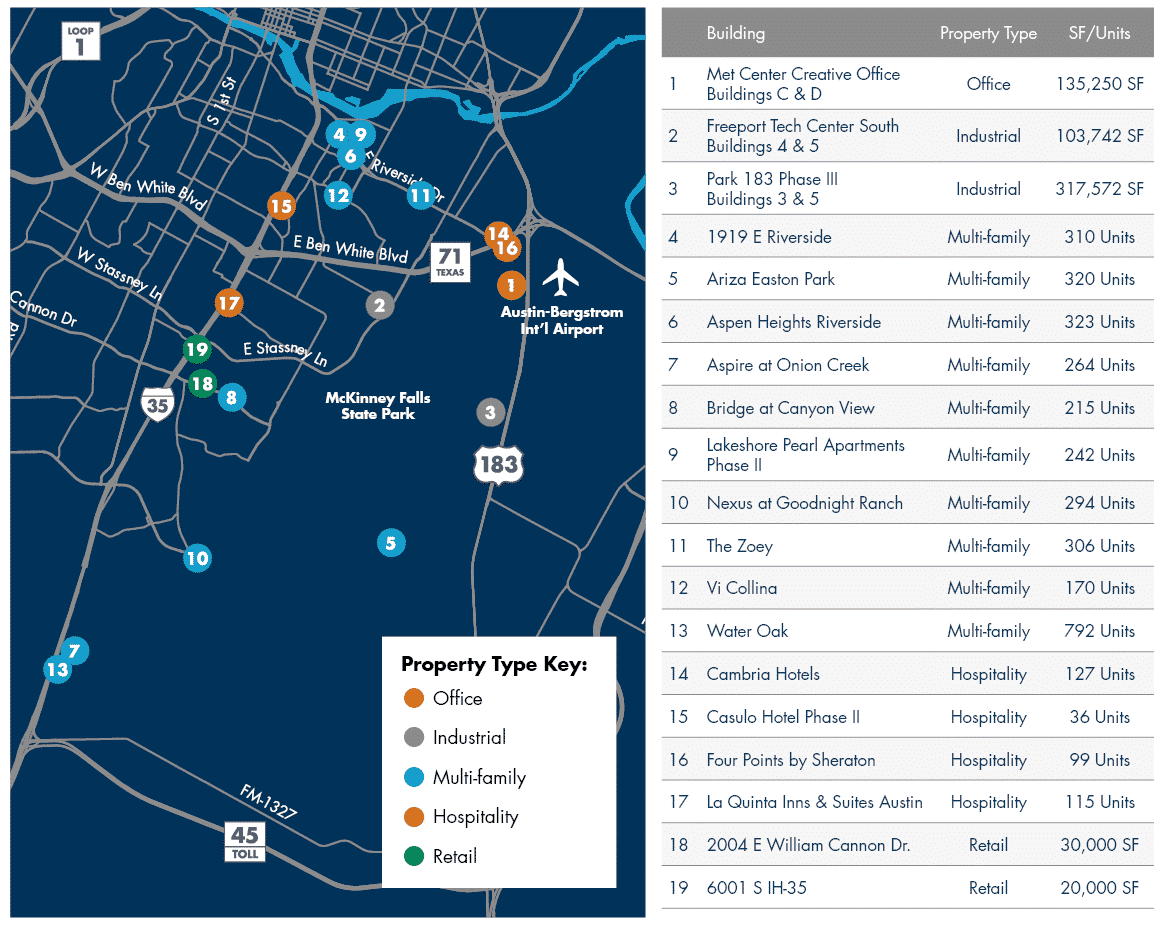
Source: CoStar
As for proposed projects, there are impressive plans in the works in Southeast Austin. If all the proposed projects come to fruition, the Southeast submarket can expect to see an additional 18.7 million square feet of commercial space and more than 4,000 additional multifamily units.
Proposed Developments in Southeast Austin
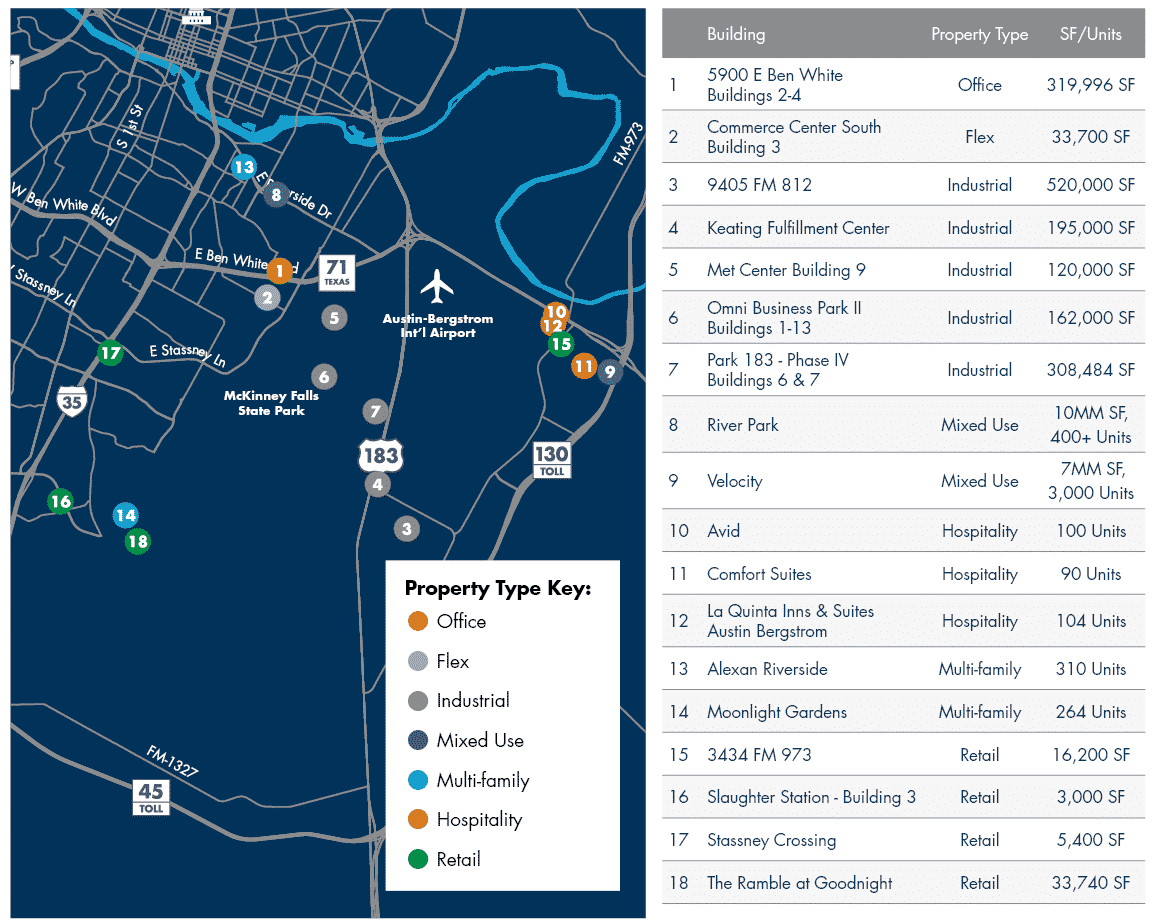
Source: CoStar
The primary drivers of this volume of space are the large-scale, mixed-use projects proposed for the area.
Read Next: South Austin Developments (Under Construction and Proposed)
Velocity
The Velocity development, located next to ABIA, is slated to bring 7 million square feet of space, including 3.3 million square feet of office space, 3,000 multifamily units, and 600,000 square feet of flex and creative space. Though construction has yet to begin, the project is in the final planning stages and could break ground soon.
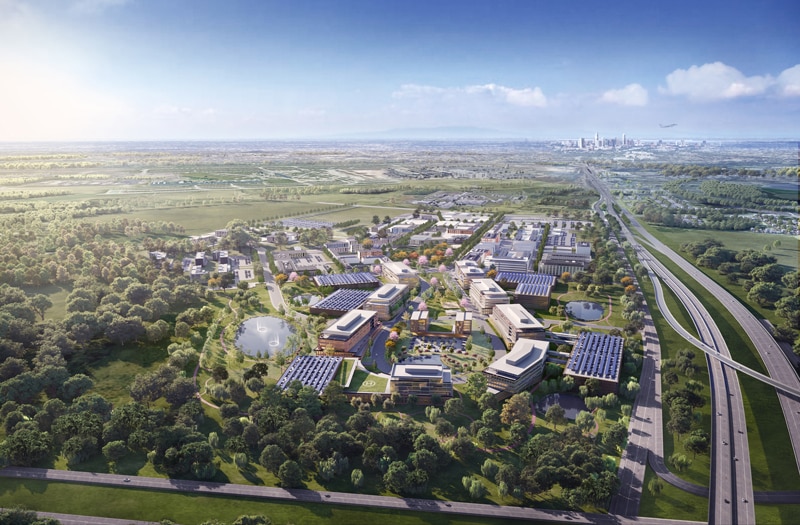
Velocity Rendering
River Park
The other big project set to make waves in the Southeast Austin submarket is River Park on East Riverside Drive. This project, commonly referred to as the “Domain on Riverside,” is expected to deliver as much as 10 million square feet of mixed-use space. Plans for the first 15 acres of the 109-acre development were recently released and include 420,000 square feet of office space, 370 multifamily units, and nearly an acre of open space and parks.
Dog’s Head
Although no specific plans have been released, Southeast Austin’s “Dog’s Head” area could also expect to see significant development over the coming decades. Encompassing roughly 3,000 acres, the area currently consists of family-owned ranches and mining operations. For size comparison, the Domain in Northwest Austin is roughly 350 acres and includes just over 3.6 million square feet of existing office space.
Experts on the area suspect it could take years (or even decades) to get the Dog’s Head ready for development, but it presents an interesting opportunity for developers willing to take on the risk and expense of reclamation projects.
Conclusion
Following in the footsteps of East Austin, St. Elmo, and other Austin submarkets that have seen historically high levels of new development in recent years, Southeast Austin appears to be on the precipice of doing the same. The area has seen an increased level of interest that could very well change the submarket’s landscape.
The unique quality of Southeast Austin is that it appears poised to drive product-type diversification in Austin. Rather than the typical back office and sales jobs that make up a sizable portion of the current Austin office market, the large-scale projects planned for Southeast Austin will provide space for the engineers, designers, and manufacturers that are needed to get new products to market.
For residents in Del Valle, Montopolis, and other neighborhoods in Southeast Austin, this development could mean a drastic increase in live-work-play options. If all goes to plan, the days of food deserts and traveling across town to go to work could soon be a thing of the past.
While it could still be a few years before we start considering Southeast Austin to be an office market rather than an industrial market, it does seem that the submarket is headed in that direction.
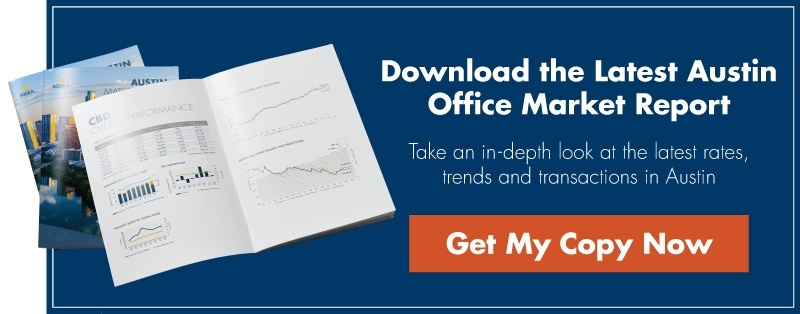
1 Census Bureau, Esri



